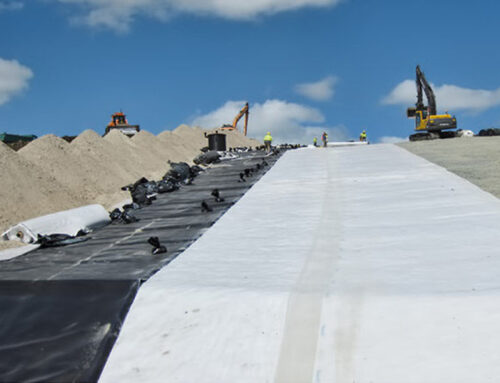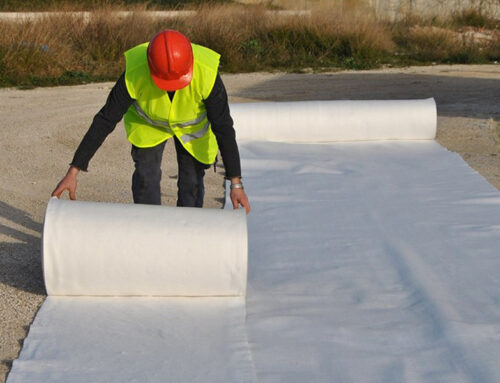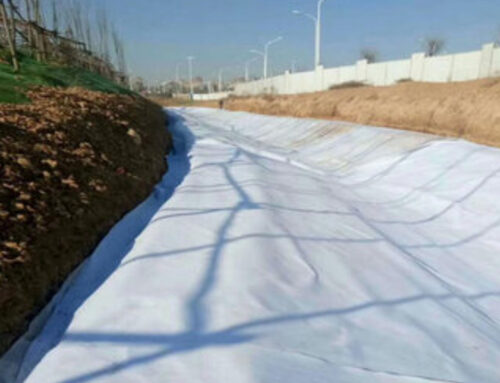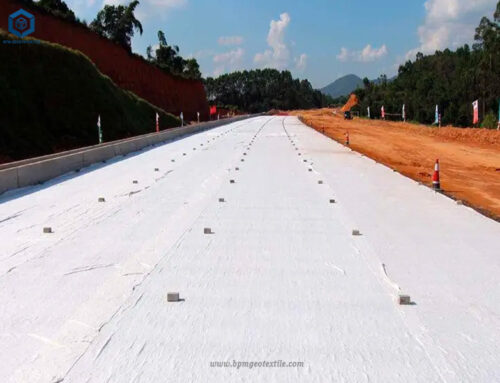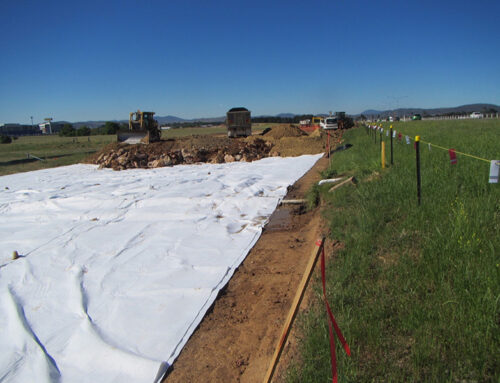Non woven needle punched geotextile, also known as needle punched geotextile fabric or needle punched geotextile, is designed and engineered to provide characteristics such as tear resistance, durability, drainage capabilities, and particle retention for various geotechnical needs, and the choice between long-filament and short fiber options depends on specific project requirements.
As the professional geotextile manufacturer ans supplier, BPM Geosynthetics offers high quality geotextile fabric at best factory price. In this blog, let us delve into what is non woven needle punched geotextile and how to choose it.
1. What Is Non Woven Needle Punched Geotextile?
Non woven needle punched geotextile is the geotextile fabric produced through a process of needle punching staple fibers in a random pattern, resulting in a fabric with high strength and dimensional stability. These fabrics are typically made from polypropylene fibers that are resistant to UV light deterioration and do not react with common soil chemicals.
The construction of nonwoven needle punched geotextile involves arranging filaments or short fibers into a mesh structure using various equipment and processes. Through techniques like acupuncture, the fibers become intertwined, entangled, and fixed to create a standardized fabric that is soft, voluminous, thick, and rigid. This flexibility allows for the production of different thicknesses to meet specific requirements.
Nonwoven needle punched geotextiles offer several desirable properties. The soft fibers provide tear resistance and durability. They exhibit good deformation adaptability, enabling them to conform to different surface conditions. The fabrics have efficient plane drainage capabilities, thanks to their soft surface with multiple gaps. The favorable friction coefficient of these geotextiles enhances the adhesion of soil particles, preventing the passage of fine particles and minimizing particle loss. Additionally, they effectively eliminate excess water and provide surface protection.
Depending on the length of the yarn used, needle punched geotextiles can be categorized as long-filament or short fiber types. Both variations excel in functions such as filtering, isolation, reinforcement, and protection, making them widely used in geosynthetic applications. The tensile strength of filament yarn is higher than that of short fibers, allowing for selection based on specific project requirements.
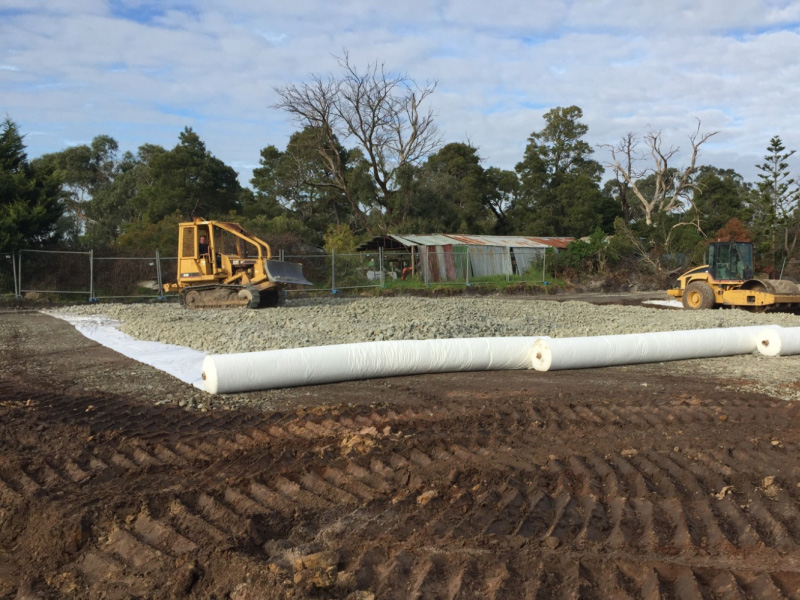
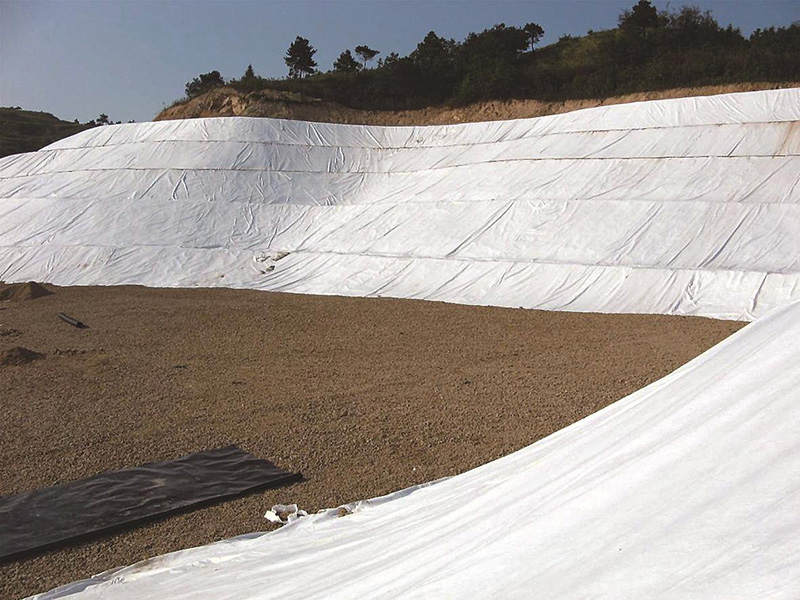
2. What Is The Difference Between Staple Fiber And Filament Needle Punched Geotextile?
The difference between staple fiber and filament non woven needle punched geotextile lies in the type of fibers used and the manufacturing process. Let’s explore each type in more detail.
Polyester staple fiber nonwoven needle punched geotextile is produced using polyester staple fibers as the raw material. The fibers undergo non-woven processes such as blowing, carding, netting, and needle-punching to form the geotextile. This type of geotextile offers several properties, including good flexibility, corrosion resistance, oxidation resistance, water permeability, filtration, and isolation capabilities. It is commonly used in various applications that require these specific properties.
Polypropylene short fiber non-woven needle-punched geotextile, on the other hand, is made primarily from high-strength and low-elongation polypropylene short fibers. The manufacturing process involves utilizing non-woven technology. This geotextile exhibits properties such as isolation, reinforcement, protection, filtration, drainage, and buffering. In terms of physical and mechanical performance, it outperforms polyester geotextiles, with indicators that are 2 to 3 times higher. Additionally, it has lower specific gravity, excellent acid and alkali resistance, good hot-melt adhesion, and strong wear resistance.
Filament nonwoven needle punched geotextile is produced using PET (polyethylene terephthalate) as the raw material. The manufacturing process involves melt spinning, air drafting, oscillating mesh laying, and needle punching, resulting in a geotextile with three-dimensional pores. This type of geotextile possesses a high mechanical index and good creep performance. It exhibits strong corrosion resistance, excellent aging resistance, heat resistance, and impressive hydraulic properties.
Polyester filament needle-punched geotextile is directly made from polyester through spinning and needle-punching. It is widely used in geotechnical engineering and civil engineering projects. The material is composed of meshed and consolidated polyester filaments, arranged in a three-dimensional structure. In addition to its good mechanical properties, it also offers vertical and horizontal drainage capabilities, elongation properties, and high chemical stability. It is resistant to biological degradation, acids, alkalis, and aging. The geotextile has a wide range of pore sizes, tortuous pore distribution, excellent permeability, and filtration performance. It is known for its high strength, puncture resistance, acid and alkali resistance, corrosion resistance, antimicrobial resistance, aging resistance, water permeability, filtration, soil retention, and its ability to provide isolation, drainage, filtration, and protection. It is cost-effective, easy to use, and suitable for simple construction.
Staple fiber non-woven needle-punched geotextile is primarily made from high-quality polyester short fibers, with fiber specifications ranging from 4-9dtex and lengths of 50-76mm. It can also be produced using needle-punched non-woven technology with fibers such as polypropylene, nylon, vinylon, or mixed fibers based on specific requirements.
Non-woven needle-punched geotextiles, regardless of the type of fibers used, offer six essential functions: isolation, filtration, drainage, reinforcement, protection, and sealing. These geotextiles find wide applications in various projects, including railways, highways, sports venues, dams, hydraulic construction, tunnels, coastal roads, reclamation, and environmental protection projects.
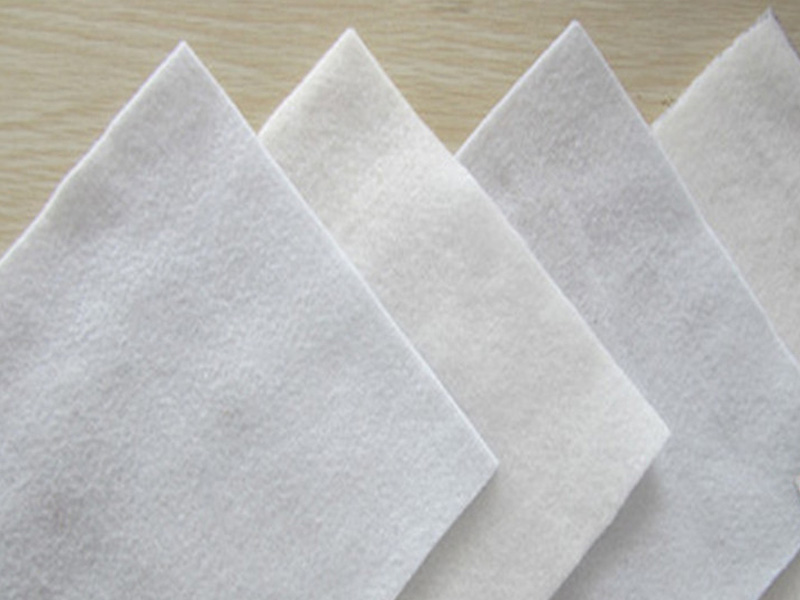
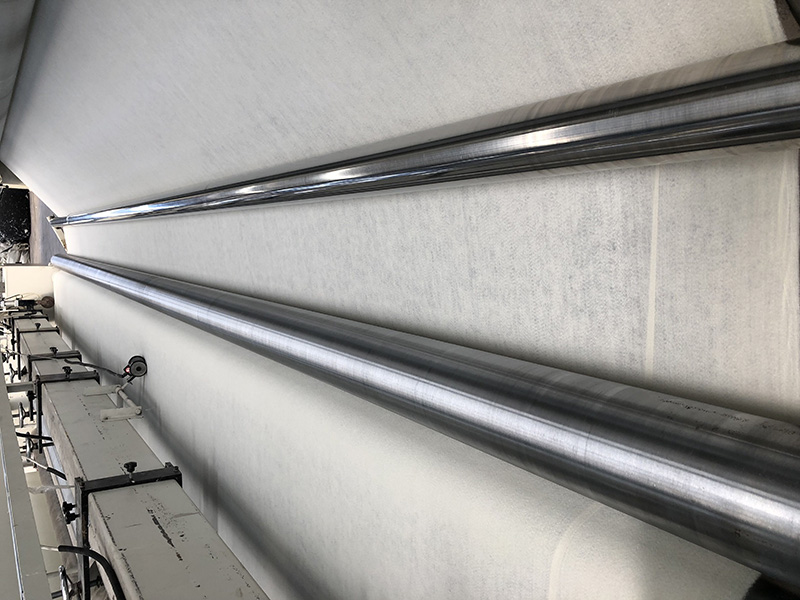
3. How To Choose Right Non Woven Needle Punched Geotextile?
In order to facilitate users to choose appropriate nonwoven needle punched geotextiles, the specifications and model parameters of nonwoven needle punched geotextiles will be introduced in detail below.
2.1 Specifications of non woven needle punched geotextiles
Needle punched geotextile specifications usually refer to its width and length. According to different engineering needs, the specifications of geotextiles will also vary. Generally speaking, the width of geotextile can range from 20cm to 6m, and the length can be customized according to project needs.
2.2 Material of non woven needle punched geotextiles
Non woven needle punched geotextiles are usually made of high-strength synthetic fibers such as polyester fiber, polypropylene, and nylon. Geotextiles of different materials have different characteristics and application ranges. For example, polyester fiber geotextile has high strength and durability and is suitable for heavy-duty transportation areas such as highways and railways; while polypropylene geotextile has good low-temperature resistance and durability and is suitable for cold areas and permanent applications. sexual engineering.
2.3 Parameters of nonwoven needle punched geotextiles
The parameters of geotextiles include mass per unit area, thickness, tensile strength, tear strength, bursting strength, peel strength, etc. These parameters will directly affect the performance and use of geotextiles.
- Mass per unit area: refers to the mass of geotextile per square meter, usually expressed in g/m². The mass per unit area is one of the important factors affecting the strength of the geotextile. Generally speaking, the greater the mass per unit area, the higher the strength of the geotextile.
- Thickness: refers to the thickness of geotextile, usually expressed in mm. The thickness will affect the water permeability and flexibility of the geotextile. Generally speaking, the smaller the thickness, the better the water permeability, but the flexibility will be reduced.
- Tensile strength: refers to the maximum tensile force that the geotextile can withstand during the stretching process, usually expressed in MPa. Tensile strength is one of the important indicators to measure the strength of geotextile. Generally speaking, the higher the tensile strength, the better the durability of geotextile.
- Tear strength: refers to the maximum tearing force that the geotextile can withstand when subjected to tearing force, usually expressed in KN. Tear strength directly affects the durability and protective effect of geotextile. Generally speaking, the higher the tear strength, the better the protective effect of geotextile.
- Bursting strength: refers to the maximum pressure that the geotextile can withstand when subjected to pressure in the vertical direction, usually expressed in KN. The bursting strength directly affects the load-bearing capacity and durability of the geotextile. Generally speaking, the higher the bursting strength, the better the load-bearing capacity and durability of the geotextile.
- Peel strength: refers to the maximum peel force that the geotextile can withstand when subjected to peel force, usually expressed in N/50mm. Peel strength directly affects the bonding effect and service life of the geotextile. Generally speaking, the higher the peel strength, the better the bonding effect and service life of the geotextile.
2.4 Selection of non woven needle punched geotextiles
When selecting needle punched geotextiles, comprehensive considerations need to be made based on different engineering needs and actual conditions. Here are some key points for choosing nonwoven needle punched geotextiles:
- Select according to project needs: Appropriate non woven needle punched geotextile types and specifications need to be selected according to different project needs and actual conditions. For example, in heavy-duty transportation fields such as highways and railways, polyester fiber non woven needle punched geotextiles with high strength and good durability need to be selected; while in cold areas and permanent projects, polypropylene with better low-temperature resistance and durability needs to be selected.
- Comprehensive consideration of the parameters of the non woven needle punchedgeotextile: When selecting the non woven needle punched geotextile, it is necessary to comprehensively consider its parameter indicators, including mass per unit area, thickness, tensile strength, tear strength, bursting strength, peel strength, etc. These parameters will directly affect the performance and use effect of non woven needle punched geotextiles and need to be selected according to project needs.
- Consider environmental factors: When choosingnon woven needle punched geotextiles, you need to consider environmental factors and choose degradable and environmentally friendly geotextile materials. For example, you can choose to use non woven needle punched geotextiles made of biodegradable polylactic acid (PLA) fibers to reduce environmental pollution.
4. Summary
In summary, choosing a suitable non woven needle punched geotextile requires considering the comprehensive effect of multiple factors, including engineering requirements, material properties, environmental factors, etc. Only by comprehensively considering these factors and we can select the appropriate geotextile and achieve the best use effect and economic benefits.

